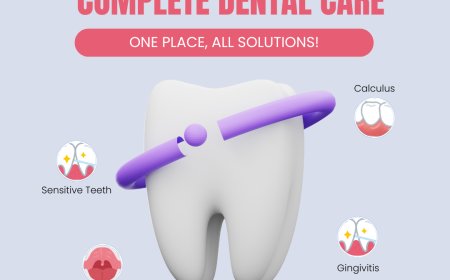How Doxycycline Works to Fight Bacterial Infections
Doxycycline is a highly effective and flexible antibiotic that combats a wide range of bacterial infections by inhibiting protein synthesis and stopping bacterial growth.

Doxycycline Monohydrate 100 mgis a widely used antibiotic known for its versatility and effectiveness against a broad range of bacterial infections. As a member of the tetracycline class of antibiotics, Doxycycline has become a staple in modern medicine due to its ability to combat infections affecting the respiratory system, skin, urinary tract, eyes, sexually transmitted infections (STIs), and even malaria.
But how exactly does this medication work inside the human body to fight off harmful bacteria? In this article, well break down the mechanism of action, explain what conditions Doxycycline treats, and explore its dosage, safety, and benefitsgiving you a clear understanding of how it helps restore your health.
What Is Doxycycline?
Doxycycline is a broad-spectrum, bacteriostatic antibiotic that works against many types of bacteria. Its available under various brand names such as Doryx, Vibramycin, Monodox, and Adoxa, and comes in multiple formscapsules, tablets, and oral suspensions.
Its popularity stems from:
-
High oral bioavailability
-
Long half-life, allowing for once or twice-daily dosing
-
Broad-spectrum effectiveness against Gram-positive and Gram-negative bacteria
-
Fewer gastrointestinal side effects compared to older tetracyclines
Mechanism of Action: How Doxycycline Fights Bacteria
Doxycycline works by inhibiting bacterial protein synthesis, which is essential for bacterial growth and replication. It specifically targets the 30S ribosomal subunit in bacterial cells. Heres how the process unfolds:
-
Binding to Ribosomes:
Doxycycline enters the bacterial cell and binds to the 30S subunit of the ribosome. -
Blocking tRNA Attachment:
This binding prevents transfer RNA (tRNA) from attaching to the messenger RNA (mRNA)ribosome complex. -
Interrupting Protein Production:
As a result, the bacteria cant produce the proteins they need to survive, divide, or spread. -
Bacteriostatic Effect:
Rather than directly killing bacteria, Doxycycline stops their growth, allowing the bodys immune system to clear the infection.
Because this mechanism is selective to bacterial ribosomes, it doesnt affect human cells, which use different ribosomal subunits.
Infections Treated by Doxycycline
Thanks to its broad-spectrum activity, Doxycycline is used to treat a wide variety of infections, including:
Respiratory Tract Infections
-
Pneumonia
-
Bronchitis
-
Sinusitis
-
Pharyngitis
Sexually Transmitted Infections (STIs)
-
Chlamydia
-
Gonorrhea (in combination with other drugs)
-
Mycoplasma genitalium
-
Syphilis (alternative treatment for penicillin-allergic patients)
Skin and Soft Tissue Infections
-
Acne vulgaris
-
Rosacea
-
Cellulitis
-
Infected wounds or boils
Urinary Tract Infections (UTIs)
-
Especially in cases caused by Escherichia coli and other susceptible bacteria
Eye Infections
-
Trachoma (caused by Chlamydia trachomatis)
-
Inclusion conjunctivitis
Tick-borne and Zoonotic Diseases
-
Lyme disease
-
Rocky Mountain spotted fever
-
Q fever
-
Ehrlichiosis
-
Tularemia
Malaria Prevention and Treatment
-
Used as a malaria prophylactic, especially in travelers
How Quickly Does Doxycycline Work?
Most people start noticing improvement in their symptoms within 24 to 72 hours of starting Doxycycline. However, the full effect can take several days depending on the type and severity of the infection.
For example:
-
Acne may take several weeks to improve
-
Respiratory infections may resolve in 5 to 7 days
-
STIs like chlamydia may clear within a week
Its crucial to complete the full course prescribed, even if symptoms improve early. Stopping too soon can lead to antibiotic resistance and recurrence of infection.
Advantages of Doxycycline
-
Oral Convenience: Easily taken by mouth, no need for injections
-
Long Half-Life: Fewer doses per day, improving adherence
-
Broad Spectrum: Effective against diverse infections
-
Good Tissue Penetration: Reaches lungs, skin, and genital tract effectively
-
Affordable: Generic versions are widely available
Dosage and Administration
Dosage varies depending on the condition, age, and weight of the patient:
Adults
-
Common dose: 100 mg once or twice daily
-
For STIs like chlamydia: 100 mg twice daily for 7 days
-
For acne: Often 50100 mg daily for long-term use
Children Over 8 Years
-
Dose based on weight (e.g., 2.2 mg/kg every 12 hours)
-
Not typically used in younger children due to risk of tooth discoloration
Important: Take Doxycycline with a full glass of water, and do not lie down for at least 30 minutes afterward to avoid esophageal irritation.
Side Effects of Doxycycline
Most side effects are mild and manageable:
Common Side Effects
-
Nausea or stomach upset
-
Diarrhea
-
Photosensitivity (increased risk of sunburn)
-
Headache
Serious (but rare) Side Effects
-
Severe allergic reactions
-
Esophagitis or ulcers
-
Liver toxicity
-
Intracranial hypertension (especially with prolonged use)
To reduce risk:
-
Use sunscreen
-
Avoid taking Doxycycline before bed
-
Inform your doctor if you have liver or kidney issues
Drug Interactions
Doxycycline may interact with several substances, including:
-
Antacids, calcium, iron, and magnesium supplements: Reduce absorption
-
Blood thinners (warfarin): May increase bleeding risk
-
Oral contraceptives: May reduce effectiveness (use backup birth control)
-
Retinoids (e.g., isotretinoin): Increased risk of intracranial pressure
Space Doxycycline doses 2 hours apart from mineral supplements or dairy products.
Who Should Not Take Doxycycline?
Doxycycline is not recommended for:
-
Children under 8 years (can cause permanent tooth discoloration)
-
Pregnant or breastfeeding women (risk to fetal bone and teeth development)
-
Individuals with allergy to tetracyclines
Always inform your healthcare provider of your medical history and medications.
Conclusion
Doxycycline is a highly effective and flexible antibiotic that combats a wide range of bacterial infections by inhibiting protein synthesis and stopping bacterial growth. Whether youre battling a skin infection, respiratory illness, or a sexually transmitted disease, this medication plays a critical role in restoring health and preventing complications.
However, like all antibiotics, it should be used responsibly and under medical supervision. Understanding how Doxycycline works empowers you to take it correctly, minimize side effects, and achieve the best possible results from your treatment.
































